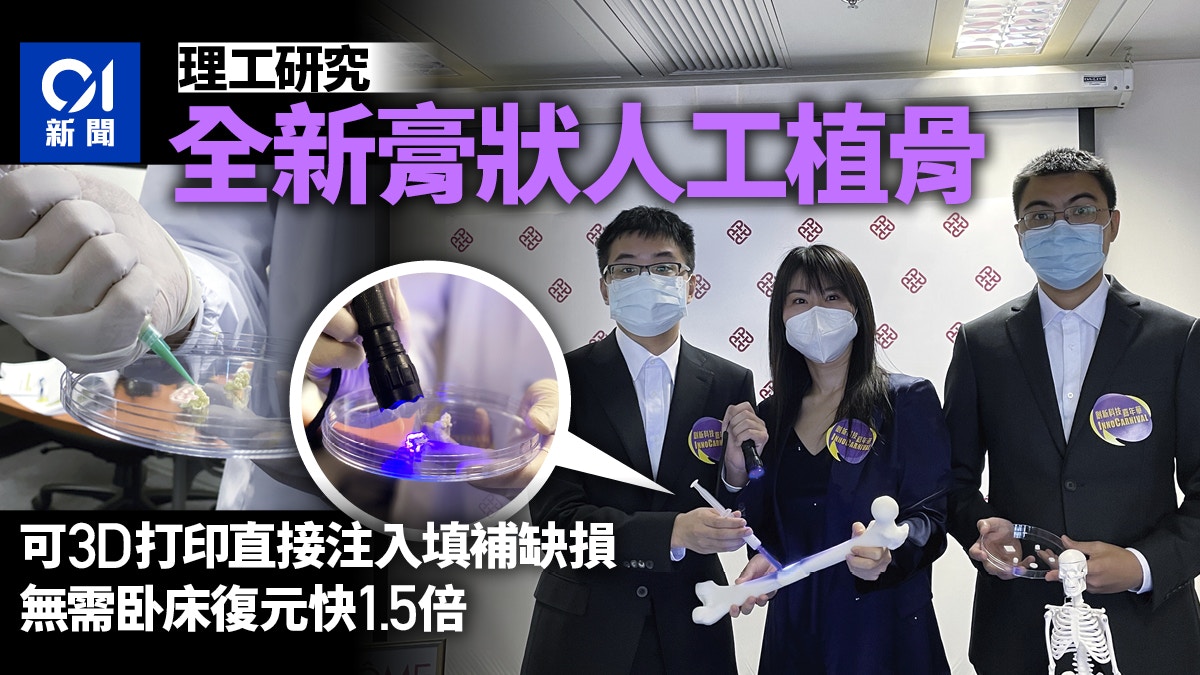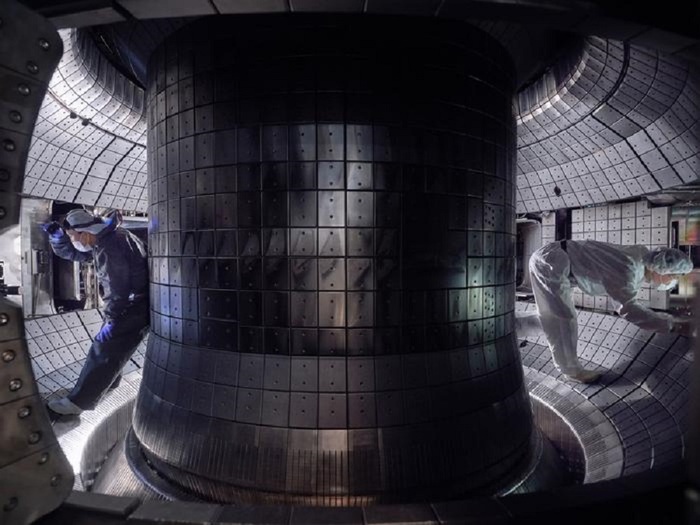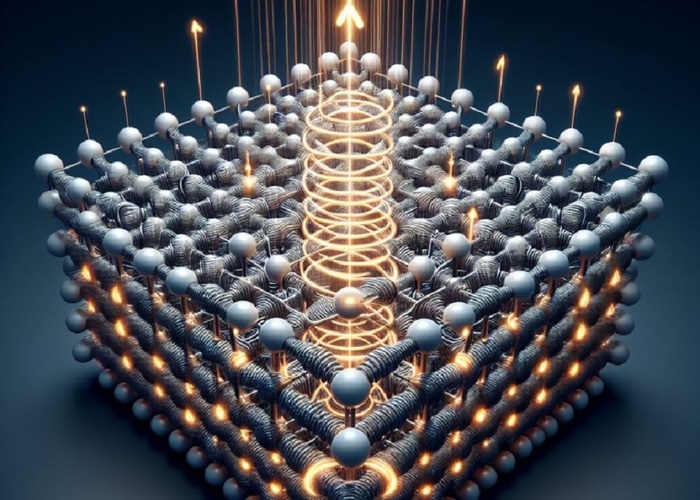The Polytechnic University team will exhibit the latest scientific research results in the "Innovation and Technology Carnival 2021" organized by the Innovation and Technology Commission.
The team spent a year to address the shortcomings of the old artificial bone graft polymer and developed a new "photocrosslinked nanocomposite bionic bone graft material." Comprehensively promote the repair of injured bones, and the recovery speed is nearly 1.5 times faster than using old materials.
The new material imitates the structure of human bones to make a paste, which can use 3D printing technology to make bone branches in advance or directly injected into the injured area during the operation to fill the defect.
Zhao Xin, an associate professor in the Department of Biomedical Engineering, pointed out that he is still in the stage of animal experimentation and hopes to be approved by the U.S. Food and Drug Administration (FDA) in the future and gradually extend the technology to clinical applications.
The University of Science and Technology showcased seven projects in this exhibition, including a new artificial bone graft polymer material developed by Zhao Xin, an associate professor in the Department of Biomedical Engineering, led the jaw team.
(Photo by Zeng Kaixin)
New R&D will be showcased in the Innovation and Technology Carnival
The Innovation and Technology Commission will hold the "Innovation and Technology Carnival 2021" from October 23 to 31. This year's carnival will hold a series of exhibitions and online video work with the theme of "Innovation for the Future" through physical and online platforms Workshops and online seminars.
The exhibition invited nearly 50 organizations from different sectors, including local universities, technology companies, etc., to showcase their scientific and technological achievements. The exhibits included various robots, environmental protection technologies, and innovative technological inventions.
The Polytechnic University will also showcase seven projects in this exhibition, including a new artificial bone graft polymer material developed by the team of Associate Professor Zhao Xin from the Department of Biomedical Engineering.
Old materials need to be heated at high temperature to shape and hinder bone recovery
Fractures are a common orthopedic injury. When severe fragmentation occurs, bone grafting is more necessary. There are several methods for bone grafting, including the use of autografts, synthetic polymers, and so on.
However, Zhao Xin pointed out that the currently used bone graft materials have different disadvantages. For example, when autologous bone grafts are used, the injured person's bone donor site may experience pain.
In addition to traditional bone grafting methods, when artificial bone graft materials are used, high-temperature heating is often used to shape them. The process has the opportunity to destroy biologically active molecules and hinder bone recovery.
The team is led by Zhao Xin (pictured), an associate professor in the Department of Biomedical Engineering.
(Photo by Zeng Kaixin)
New materials can be directly injected into the injured area to fill the defect
In view of this, Zhao Xin and her team spent nearly a year to address the shortcomings of the old artificial bone graft polymer and developed a new "photocrosslinked nanocomposite bionic bone graft material". The new material can be used in capsules and Based on the common polymer monomers of bone nails, it can imitate the structure of human bones to make a paste. 3D printing technology can be used to make bone stents before surgery; it can also be directly injected into the injured area during surgery to fill the defect. Then the paste is irradiated with ultraviolet rays for 140 seconds to make it solidify and reach a certain strength.
The new material does not require high temperature setting and can hold biologically active molecules
Pei Haobin, one of the team members and a doctoral student in the Department of Biomedical Engineering, explained that bioactive molecules can help promote bone repair, but the old artificial bone graft polymer materials need to be heated at high temperature to shape, heating may destroy the molecules, which is not good for recovery; However, the new material developed by the team does not require high-temperature styling and does not contain organic solvents, so it can contain biologically active molecules, more comprehensively promote the repair of injured bones, and the recovery speed is nearly 1.5 times faster than using old materials.
Pei Haobin said that there are literatures that weight-bearing can stimulate bone cells and vascular regeneration in injured patients, and that fracture patients can accelerate bone recovery if they have proper weight-bearing after surgery.
He said that the "photocross-linked nanocomposite bionic bone graft material" can reach a certain strength immediately after the operation, and the patient does not need to be bedridden. It helps the patient to speed up the recovery speed by bearing the weight after the operation.
Zhao Xin said that the new materials are still in the stage of animal experiments, and he hopes that in the future, they can be authorized by the US Food and Drug Administration to gradually extend the technology to clinical applications.
The first Hong Kong Innovation and Technology gong started to allow academic innovation and technology talents to showcase their creativity. The 9 R&D laboratories of the University of Hong Kong are stationed in the Science Park InnoHK, including the vaccine research led by Yuan Guoyong, afraid of injections?
U.S. develops 3D printed "vaccine tape" painless vaccination becomes a reality
01News












/cloudfront-eu-central-1.images.arcpublishing.com/prisa/KMEYMJKESBAZBE4MRBAM4TGHIQ.jpg)


